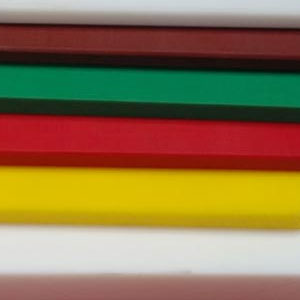
Colour-Coded Cutting Boards Help Prevent Cross-Contamination
October 11, 2017In the food industry, cross-contamination is a major concern since it can lead to people becoming ill with food-related illnesses. This issue occurs when harmful bacteria are transferred from one food source to another through improper handling methods. Often times, cutting boards are the problem due to cutting a variety of foods on the same board without washing it in between to sanitise. For example, a worker may cut raw chicken on the board and he or she will chop vegetables on the same board. The salmonella on the chicken is spread to the vegetables and may harm those who eat the vegetables just for one example. Below, we explain how colour-coded cutting boards help to prevent cross-contamination.
Cutting Boards Come in a Wide Assortment of Colours
First, you need to know that cutting boards come in a wide assortment of colours today. You can purchase polyethylene ones in such colours as brown, red, green, white, black, yellow and blue. Be certain you have a sufficient assortment of colours, so you can proceed with the next step.
Colour Code All of Your Cuttings Boards
Once you stock up on a variety of coloured cuttings boards, set up a colour-coded system to ensure that you avoid cross-contamination with your food prep or processing. The following system is just one example of how you can accomplish this:
- Brown is an ideal colour to allot for cooked beef and other types of cooked red meats.
- Red is easy to remember for raw beef or other red meats.
- Green cuttings boards for raw vegetables, herbs and fruits
- White is the perfect colour to allot for dairy products such as cheese
- Black can be allotted for raw fish and seafood
- Yellow for cooked poultry
- Blue cutting boards can be for cooked vegetables or other cooked foods not allotted on this list
Maintain the Boards in the Proper Manner
Another way to prevent cross-contamination is by properly maintaining your cutting boards. After a while the boards can develop grooves that will trap bacteria, even after they are washed. Polyethylene ones are dishwasher safe, but if the grooves are deep enough the bacteria will not wash off that effectively. This is when you need to hire a professional to resurface your cutting boards.
To receive quality resurfacing for your coloured-coated cutting boards, turn to Cutting Board Services. We offer mobile services for this in order to keep your inconvenience at a minimum. In addition, we carry all of the colours of cutting boards in polyethylene that we mention in this information to provide you with new ones in various grades and sizes when the need arises.
Optimized by NetwizardSEO.com.au
Posts 2018
Posts 2017
- Reasons Why Your Commercial Cutting Boards Should Be Odour-Free
- Why Plastic Cutting Boards are the Best for Kitchen Knives
- Easy Tips on How to Remove Stains from Plastic Cutting Boards
- European Quality Cutting Boards Supplier in New South Wales
- Food Equipment Safety: Why Food-Related Businesses Should Monitor Their Cutting Boards
- Colour-Coded Cutting Boards Help Prevent Cross-Contamination
- What Causes Black Mildew on Plastic Cutting Boards?
- Why Should Restaurant Owners and Chefs Be Conscious About Cutting Board Condition and Appearance?
- Commercial Grade Poly Cutting Boards: How Tough Should They Be?
- Resurfacing Commercial Cutting Boards: Why Food Businesses Should Do This?
- Commercial Cutting Boards: Choose High-Quality, Imported European Cutting Boards
- What Are Flexible Cutting Boards?
- Why Commercial and Restaurant Cutting Boards should be made from Polyethylene?
- Causes of Molds in Wood Cutting Boards
- Simple Cleaning and Maintenance Tips for Plastic Cutting Boards
- Benefits of Mobile Services for Cutting Board Supplies, Repair and Restoration
- Benefits of Cutting Board Reconditioning for Your Business
- Different Material Types of Cutting Boards
